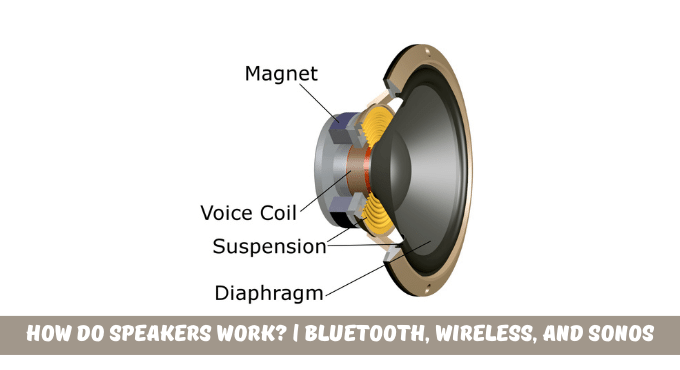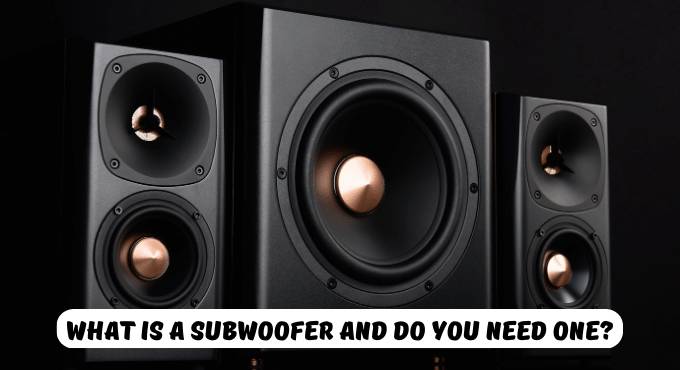Are you looking for How to connect a subwoofer to a receiver? The purpose of a subwoofer is to reproduce low-frequency audio signals at 20 Hz and lower. In both music and film, it supplies the majority of the power for bass notes.
Introduction
Consider purchasing a subwoofer to enhance your audio quality at home and when traveling. A subwoofer enhances the audio systems’ quality by recreating deep, low-frequency sound waves.
It has one or more woofers housed in the housing, extra drivers for creating high-frequency sound, and other drivers. If your receiver lacks a subwoofer output, there are solutions to help you enjoy your music more. Start constructing the best entertainment space in your living room right away.
Understanding the Subwoofer Types
Learn about active and passive subwoofer systems.
- Active subwoofers feature amplifiers, which results in a more robust and controlled sound. They are widely used in home cinema systems since a separate power source is required.
- However, since your receiver powers passive subwoofers, they don’t need an amplifier. They may provide excellent sound even without the same capabilities as active subwoofers.
How to connect a subwoofer to a receiver without subwoofer output?
If your receiver has no separate output, you may connect a subwoofer to it using several methods:
Left and Right Stereo Speaker Outputs
The receiver’s left, and right stereo speaker outputs can be used to connect if it doesn’t have a specific Subwoofer outlet. Run a wire from your subwoofer’s left and right line-level inputs, attaching one end to each production. The term “Y” connection is widely used to describe this method.
Connect Using the Preamp Outputs
It is possible to connect the subwoofer using this output if your receiver includes preamp outputs, sometimes known as presets. Run a wire from the two preamp outputs to your subwoofer’s left and right line-level inputs, connecting one end to each.
Utilizing Speaker-Level Inputs
Regular speaker wire from the output terminals on your receiver can connect your subwoofer if it has speaker-level inputs. It is beneficial if your receiver lacks a specific subwoofer output. Connect your subwoofer’s information to the principal or surround speakers’ outputs using two cables. Then, to achieve the best sound quality, modify the crossover frequency, volume, and phase settings.
Speaker-Level Outputs
The subwoofer and speaker-level outputs on your receiver should be connected using the same procedure. Join the central/surround speaker inputs to the subwoofer outputs. Verify that all settings are ideal for the best audio quality.
Line-Level Inputs
You can connect your subwoofer to your receiver using the cassette or line-out jacks if it has line-level inputs. Adjust and attach a single wire to each jack’s information to quickly set up your subwoofer.
The control and power that this tactic may provide less than other strategies, but it is still simple and efficient.
Using a Subwoofer Line-Out Converter
A line-out converter can let you quickly improve your audio experience. Suppose your receiver doesn’t have a subwoofer output or line-level inputs. In such a scenario, you may soon update your audio system by utilizing this gadget, which lets your subwoofer get a clean mono low-frequency output.
The installation is finished by attaching two wires from your primary speakers’ works to the converter’s intakes and one wire from the converter’s output to the subwoofer’s input.
Portable Amplifier for Passive Speakers
There is still hope if you’re utilizing a passive subwoofer (one without its amplifier) and your receiver lacks a specific subwoofer output. You may buy an external power amplifier to give your subwoofer the power it needs. It is beneficial if you want to avoid running lengthy speaker lines from your receiver to the subwoofer.
Connecting a passive sub to the speaker outputs of a receiver
Finally, connect your passive subwoofer to your receiver if it lacks line-level inputs or a dedicated subwoofer output by clicking the speaker wires from the central/surround speakers’ works to the passive subwoofer’s input. Make sure to adjust every parameter properly for the best sound quality.
Adjusting Settings
After connecting your subwoofer, optimizing the settings is crucial to achieving the optimum sound quality. It involves adjusting the crossover frequency, volume, and phase settings—often made using the receiver’s menu system or the subwoofer itself if it has an internal control knob.
Experiment with a few options to determine which settings sound the best and have the most incredible bass reaction.
How do I determine whether my subwoofer and receiver are compatible if I cannot get to the subwoofer output?
The fastest approach to determining connectivity between your subwoofer and receivers is to look at their specifications.
See details on frequency response, power handling capabilities, and impedance (measured in watts). Ensure that all of these ratings agree before you connect with someone or purchase something.
How should a novice set up and connect a subwoofer to a receiver without a subwoofer output?
- Establish the subwoofer and receiver connection type that is required. Many receivers have a dedicated LFE or Sub Out jack, which makes connecting the subwoofer easy as it only requires an RCA cable. However, if your receiver lacks this output, you could use speaker-level outputs (which call for additional speaker wire) or a digital audio connection.
- Locate the suitable output on your receiver before connecting your subwoofer. Your user manual’s instructions and illustrations should cover RCA and speaker-level outputs, among other types of works. It’s simple to implement and will improve the quality of your sound.
- Configure the low-frequency crossover to change the bass frequencies supplied from your receiver to your subwoofer. The user manual with your reception should provide comprehensive guidance on how to do this.
- The built-in controls or the wireless remote make adjusting the subwoofer’s volume simple.
- To create the best possible sound modification, follow the thorough directions in your user manual.
- Utilizing the receiver’s built-in controls or the remote control, you can easily change the crossover frequency of your subwoofer. You may adjust the broadcast’s high and low frequencies with this straightforward function. You may attain the ideal sound quality by adjusting the crossover frequency, which is covered in depth in your user manual.
- Adjust your subwoofer for the best audio quality, whether watching a movie or listening to music. Experiment with various parameters to discover the best sound with your particular setup.
- After finalizing it, it’s important to check regularly to ensure the sound is still fantastic. A regular check removes any changes in humidity or temperature that might affect the system’s sound.
Are there any unique factors to consider when attaching a subwoofer without subwoofer outputs?
Consider a few crucial factors to connect a subwoofer without subwoofer outputs.
- Ensure the receiver and subwoofer have compatible impedance and power handling capabilities first.
- Second, if you’re utilizing speaker-level outputs, use the proper wire and connect each speaker in series.
- Last but not least, if you’re connecting digitally, be sure your receiver and subwoofer support the same digital audio format.
Enjoy the most incredible sound while being informed!
You better understand connecting a subwoofer to a receiver without subwoofer output.
If all of these special considerations are considered, and the proper connections are made, you should enjoy excellent sound quality from your subwoofer without issue.
Conclusion
Subwoofers perform admirably in home theater systems with surround sound capabilities. Most such devices will have preamp outputs, so it is okay if your device does not have a subwoofer output. Your system can still work without the sub-out if you have a speaker-level connection or an RCA input.
















Leave a Reply